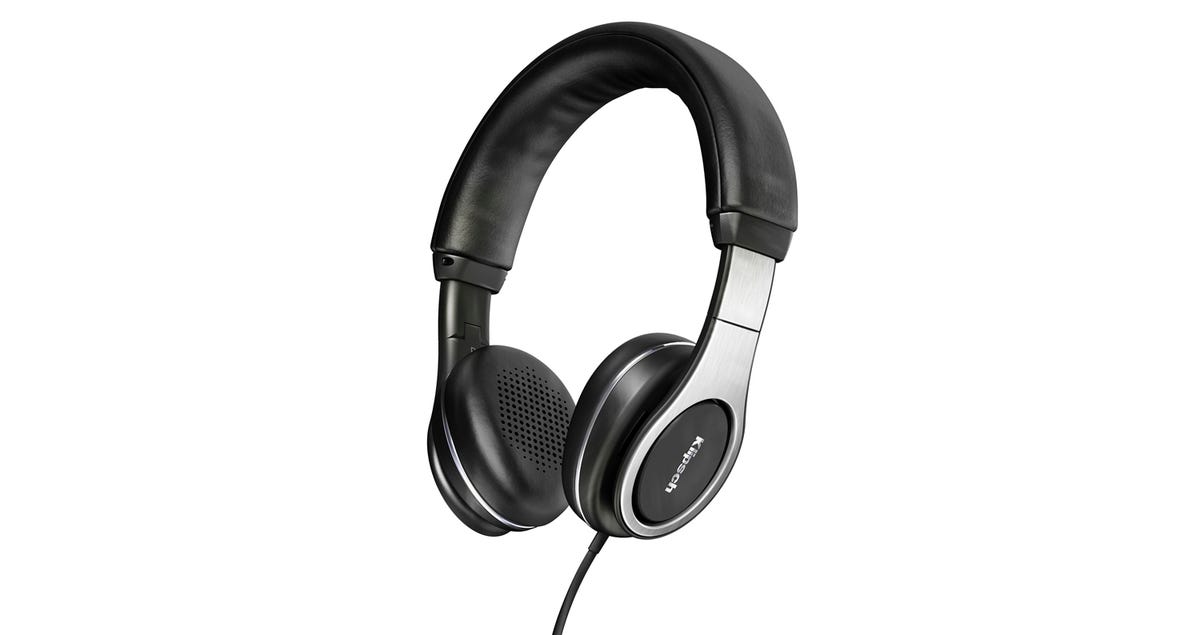
Klipsch
No doubt about it: the Klipsch Reference On-Ear makes bass and lots of it, but it’s not boomy, thick, or muddy. I find with the best headphones it’s all about overall balance, and when the bass obscures midrange or treble detail, it’s game over. For example, the Sol Republic Master Tracks ‘phones dished out loads of bass on rapper/producer Earl Sweatshirt’s tune “Inside,” but the bass was overpowering. Switching over to the Reference On-Ear, the bass was just as satisfying, and percussion and vocals popped out of the mix more.
The Reference On-Ear headphones feature 40mm drivers, and they have a 32 ohm impedance. The soft ear cushions are fairly comfortable to wear for extended periods of time. This hinged headband ‘phone is available in black or white finishes; a soft, drawstring carry case is included.
There’s one design misstep: the Reference On-Ear headphones’ cable isn’t user-replaceable, so if the cable breaks you’ll have to return the headphone to Klipsch for service. The cable features a mic plus three-button control for iPhone, iPod Touch and iPod. That’s nice, but plugging in the Reference On-Ear into a FiiO X1 or X3 Gen 2 froze both players’ controls. There was no problem however with the Sony Walkman NWZ-A17 player and my iPod Classic.
The Sennheiser Urbanite On-Ear is a much better sounding headphone than the aforementioned Master Tracks. The Urbanite’s bass definition and clarity are excellent, and the bass does in fact reach deeper into the lowest octaves than the Reference On-Ear headphones. Still, the Reference edges past the Urbanite’s overall clarity. We’re back to the balance issue — the Reference On-Ear’s bass-mid-treble balance is slightly more accurate than the Urbanite On Ear headphone’s.
Bob Marley’s “Dreams of Freedom” ambient dub reggae album sounds great on both headphones, but the Reference On-Ear’s superior clarity lets you follow the percussion instruments better. It’s a little more vibrant and spacious sounding. Frank Sinatra’s vocal and big band on “Fly Me to the Moon” sounded more natural over the Reference On-Ear headphones; the Urbanite On-Ears were less kind to Sinatra’s voice.
So far so good, but the headphone to beat in this price range is the new Koss Pro4S . It’s more refined and accurate sounding than any headphones I’ve mentioned so far, including the Reference On-Ear, which sounds more closed-in and “canned” than the Pro4S. As for bass power, the Reference On-Ear has a tiny bit more, but when I swapped between the two headphones, the Koss Pro4S still had the lead — it’s the reigning champion.
In the US, the Klipsch Reference On-Ear headphones sell for $199, in the UK they’re £179.



